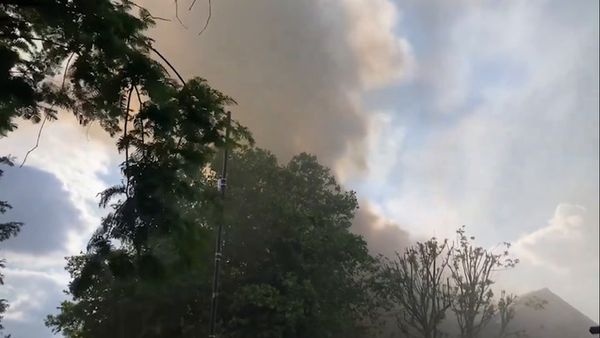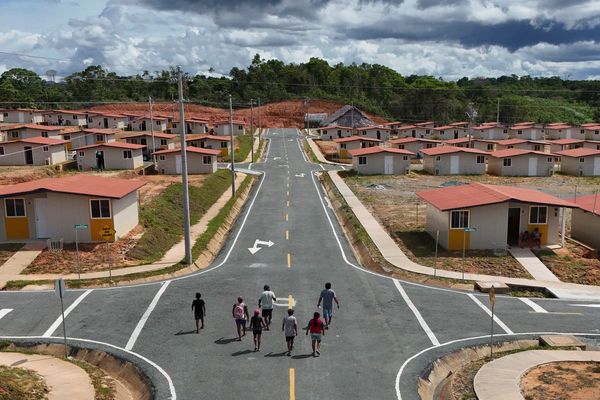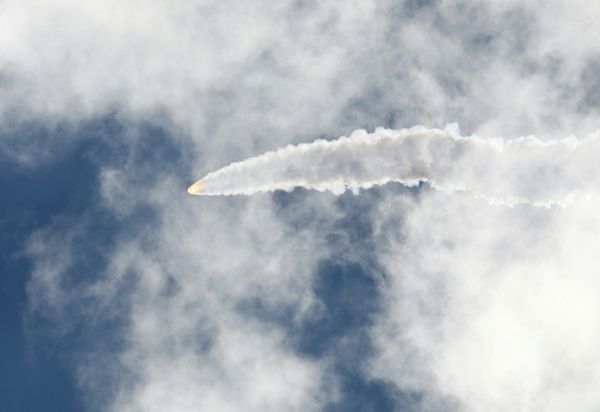
The nation’s modern history has been consumed by revolution and civil war
The US believes there is little chance of a ceasefire in Sudan as neither side has an incentive to stop warring.
- SEE MORE Sudan evacuation: has Foreign Office learnt the lessons from Afghanistan?
- SEE MORE A new wave of violence hits Sudan
- SEE MORE What next for Sudan as ceasefire attempt fails?
“The fighting in Sudan between the Sudanese Armed Forces and the Rapid Support Forces (RSF) is, we assess, likely to be protracted as both sides believe that they can win militarily and have few incentives to come to the negotiating table,” US Director of National Intelligence Avril Haines, told a US Senate hearing.
Each side “appears to be battling for control of territory in the capital (Khartoum) ahead of any possible negotiations”, said Al-Jazeera, though the leaders of both factions “have shown little public willingness to hold talks after more than two weeks of fighting”.
As fighting continued in Khartoum for the 20th straight day, The Week takes a look at how the conflict began.
How far back do its problems go?
The state of Sudan took shape in the 19th century, under Egyptian and then British rule. Upon independence in 1956, it was dominated – as it had been for centuries – by Arabic-speaking Muslims who had occupied the fertile lands around the Nile, based in the capital Khartoum. They presided over a vast territory filled with different religious and ethnic groups: Beja, Fur, Nubians, Dinka, Nuer, Copts.
The nation’s modern history, wrote the historian Robert O. Collins, “has been consumed by revolution and civil war”. Upon independence, war broke out between the Islamic north and the Christian and animist south (two civil wars would leave 1.9 million dead and would lead eventually to South Sudan’s secession in 2011). But there have also been a number of other conflicts between state-backed forces and largely non-Arab regional separatists: in the southern states of Blue Nile and South Kordofan, and the western region of Darfur.
What kind of governments has Sudan had?
The country has mostly been ruled by military dictators. There have been 35 coup attempts since 1956, six of them successful. Omar al-Bashir, an officer in the Sudanese Armed Forces (SAF), seized control in 1989. His rule was supported by Sudan’s leading Islamist party, the National Islamic Front, and imposed a form of sharia law on the country. It was also deeply corrupt: the generals established control over the economy, particularly the banks, telecoms and construction industries, and over Sudan’s valuable oil revenues.
Bashir fought vicious wars in the south and in Darfur – where 300,000 were killed, leading to his indictment for crimes against humanity by the International Criminal Court in 2009. But when South Sudan seceded in 2011, it took 75% of the country’s oil wealth with it. Eventually, this made it impossible to sustain the food and fuel subsidies that had kept Bashir in power.
How was Bashir removed?
In December 2018, four months of continuous protests began in Khartoum and other big cities against the economic situation and the military’s political domination, led by trade unions and other civil society groups. In April 2019, Bashir was removed in a coup d’état. In August, a transitional government was installed, with a civilian PM, Abdalla Hamdok. But even after this so-called Sudanese Revolution, real power lay with the generals who had removed Bashir – Abdel Fattah al-Burhan, the head of the SAF, and Mohamed Hamdan Dagalo, known as Hemedti (“Little Mohammed”), a former militia warlord who controls the paramilitary Rapid Support Forces (RSF). In 2021, these two men dispensed with Hamdok and brought the country back under military rule.
Why is Hemedti so powerful?
Originally because of the war in Darfur. It erupted in 2003, between the indigenous sedentary African peoples of Darfur and its nomadic Arabs, exacerbated by climate change and state oppression of non-Arab groups. Bashir’s regime decided to fight its counter-insurgency campaign in Darfur on the cheap, by arming the Janjaweed, a notorious Arab militia known for violently extracting land and resources from African tribes.
Hemedti came to prominence as a commander in the Janjaweed, which carried out mass murders, mass rapes and other atrocities. The militia was rewarded, in 2013, by being given official status as the RSF. Hemedti was then tasked with “coup-proofing” Bashir’s regime; in return, he was given control of gold mines in Darfur. During the Revolution, the RSF was stationed in Khartoum as civilian protests escalated, and Hemedti was made its commander. Later that year, though, he helped remove Bashir.
Why has he now turned against the army?
Technically, the RSF and the SAF fell out over the timetable for integrating the former into the regular army. But this is essentially “a mobster shoot-out”, says Alex de Waal of Tufts University; Hemedti and the army chief, Burhan, control Sudan’s two most powerful forces and are vying to control the nation and divide up the spoils.
There is also a social dimension. Hemedti is seen in Khartoum as a rough provincial upstart. Burhan, who controls the junta that Bashir used to head, is a more acceptable figure to the Khartoum elite who control Sudanese politics: a career army officer from the north of the country who trained at the Sudanese Military College. “It’s a case of chickens coming home to roost,” says the BBC World Service’s Mohanad Hashim. “Khartoum has been exporting violence to the various parts of Sudan for seven decades.” Now the hired guns are laying waste to the capital.
Will the Sudanese people have a say?
Although in 2019 the Sudanese Revolution brought the country tantalisingly close to democratic rule, that now seems a forlorn hope. The conflict offers the choice between a return to the authoritarian rule of the “deep state”, or to that of Hemedti’s mercenary kleptocrats. Both have a long history of atrocities against civilians: in June 2019, the RSF massacred over 100 democracy protesters on the streets of Khartoum.
Why is the conflict important?
Hamdok, the former PM, this week warned that a full-scale civil war would rival Syria’s and Yemen’s for destructive effect. Sudan is geographically the third largest country in Africa, strategically located on the Red Sea coast, between the Arab world and the rest of Africa.
The region is already highly unstable, with civil conflicts in five of its seven neighbours: South Sudan, Libya, Ethiopia, Chad and the Central African Republic. Refugee flows are likely to be very large – including to Britain, which has a Sudanese community around 35,000 strong. Egypt will be alarmed because it relies heavily on the Nile for its fresh water. “I think it would be a nightmare for the world,” said Hamdok.







